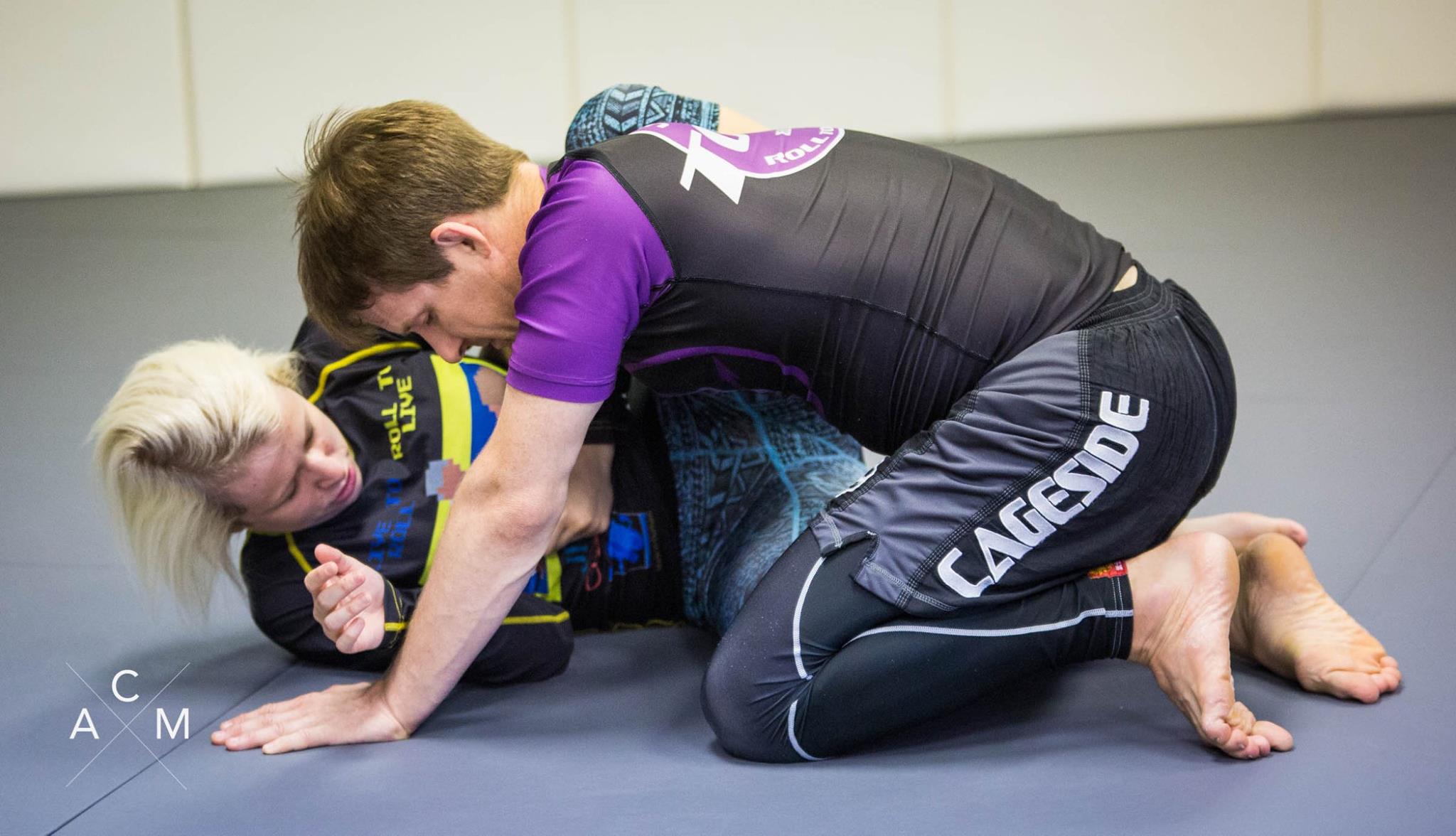Sparring is one of the most important components of jiu-jitsu training. If you can execute a BJJ technique against a fully resisting partner, you can have confidence that technique will work.
But what are the guidelines for sparring — which BJJ people call “rolling”? I wrote a whole post about how to approach rolling in BJJ for maximum benefits, but for new folks, here are the pieces of advice I think are most important.
It’s always OK to tap, and it’s always required that you respect a tap from your partner. Tapping is how we signal a need to stop, usually because a submission is on. We can also use it to signal that we need to stop because of an injury, or maybe we’re rolling off the mat. This is a safety issue and a respect issue: if you feel like you’re in danger, tap. You can either tap the person or say tap (I usually do both, just to be sure), but try not to tap the mat — they might miss it.
If your partner taps, let go immediately. If you think your partner is tapping but aren’t sure, stop anyway. The consequences of losing a position don’t matter at all compared to possibly injuring a friend and training partner. Besides, if it turns out they aren’t tapping, they should let you re-start where you were. Respect is mutual.
Try to match your partner’s pace when sparring. I’ll do a whole post on this, but quickly: a huge percentage of the bad feelings I’ve seen develop in a gym involve this. One partner thinks the other partner is out of control and trying to murder them, or one partner would prefer a harder roll than the other partner is willing to give. Pay attention to the cues your partner is giving off, especially with someone you don’t know well. Personally, I start slow and gradually escalate my pace to match the effort of my partner, unless it’s a competition level roll, or with one of those training partners that you know goes hard every time. I am happy to go hard or go light, depending on the context.
Focus on learning. Try to work on the positions you’ve been training in class lately, And generally, go slower than you think you need to — not only for politeness’ sake, but for refining your own technique. Jumping for attacks only works when you’ve drilled those attacks a ton — slow makes smooth, smooth makes fast.
Don’t care about “winning” the roll. Everybody taps. It’s fine. If you get your guard passed and you end up in a terrible spot, don’t think of it as “losing” — think of it as a chance to work on your survival and escapes, which a lot of us think are the most important parts of jiu-jitsu.
Try not to stall. It’s important to work on our positions of control, but if you know for a fact that your partner can’t escape your side control or open your closed guard, don’t hold them there for five minutes. That’s of minimal benefit to either of you. Instead, maybe let them recover guard and work on your passing, or open your guard and attack. There’s a time and a place to work control, but generally this won’t be with people you already know you can hold down.
Of course, there’s a time and a place to go competition speed. That’s necessary, too, even if you don’t plan to compete! I’m a huge believer in the value of training hard. But bear in mind that this is a long journey, and one you’re taking with your training partners — so be sure to be on the same page if you’re going to train as if it were a competition.
This is the ninth post in a series called the White Belt Starter Kit, advice for newer students. This series will answer some of the most common questions you might have, like how to get the most out of drilling, how to roll safely and well, how to maximize your training benefits, and how to be a helpful and valuable training partner. There will be a dozen or so posts in the series, which will be available here and updated consistently.
Want to join us on the mat? We’re offering an 8 Week Intro to BJJ class for just $150, and the first 25 registrants will receive a FREE Toro BJJ gi that retails for $155 as part of your registration. You can find the tentative curriculum for the eight-week class here. You can sign up for the Intro to BJJ class here, or you can e-mail jeff@bellinghambjj.com. The first class begins on WEDNESDAY, AUG. 8 from 5:30 p.m.-7 p.m. and runs Mondays, Wednesdays and Fridays following that from Aug. 8 to Sep. 26 at 5:30 p.m. Classes take place at Bellingham MMA, 2694 Roeder, Suite 101, Bellingham, WA, 98225. The last class will be Sep. 26 at 5:30 p.m.

